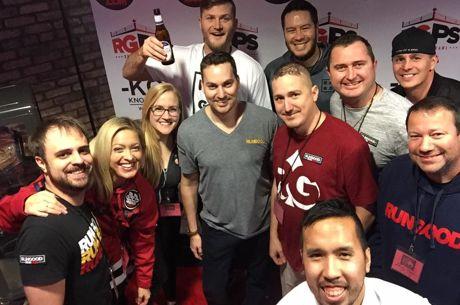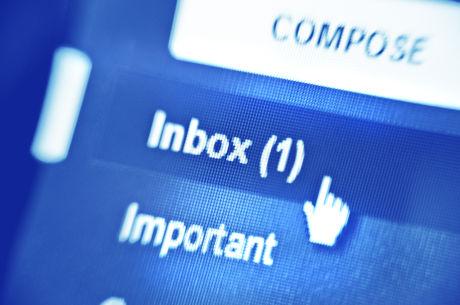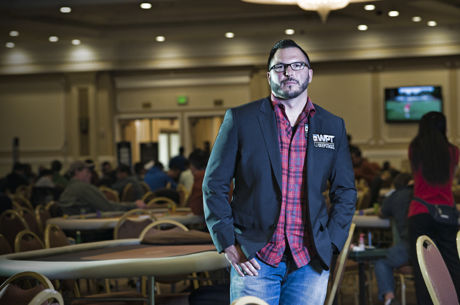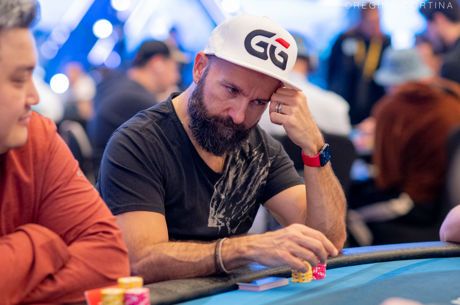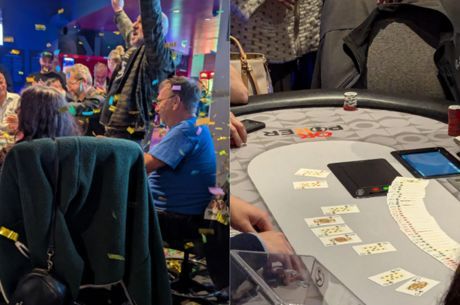'It Would Have Changed the Game' -- An Oral History of ChipTic, Part 2

Table Of Contents
At the 2012 World Series of Poker, a shiny new product received its public unveiling. Players and fans the world over were introduced to a program with revolutionary potential. It could track the chip ebbs and flows of every player in a tournament while also serving as the back end operating system to run said tournament. It promised the ability to change the way poker tournaments were followed, with players and fans interacting at the stroke of a few keys.
That product was ChipTic. And it proved to be a colossal failure.
This is the oral history of ChipTic, from those who experienced it first-hand and witnessed that failure — three former employees, two members of WSOP staff and two poker media members who watched it implode. The interviews have been edited and condensed for clarity. All titles are dated to 2012.
Bumpy WSOP Beginnings
Behind the scenes, things were off to a slow start. Though the ChipTic team, by now including dozens of employees set to work on the WSOP floor, had arrived before the start of the series, an immediate launch proved unfeasible when an early attempt to implement the system failed.
And not everyone was excited for the program's arrival.
Donnie Peters (former PokerNews editor-in-chief): Heading into the 2012 WSOP, we were preparing for the summer and doing the live coverage. I was heading the team and we kind of got word of this thing. We didn't know what it was called. We just heard there was some new technology that was gonna be brought forward that was going to revolutionize poker coverage.
I'm not gonna sit here and say I was not worried. I like to think I wouldn't be doing my job if I wasn't worried about these things. I wasn't sitting at my desk freaking out because my job is gonna be rendered obsolete. Part of me looked at it as, "This is the shot in my ass this year to drive the team to be the best they can be."
Staff side, I won't name names but we always had our guy on the WSOP staff that we could go talk to. Not a lot of them seemed too thrilled. It wasn't so much having to use the system. It was just the fact that it was thrown into the middle of the WSOP.
Doug Shrader (ChipTic employee): The dealers were wary at first as they should be. It was a foreign object basically dumped on them by a company that nobody knew and with the vision that they didn't quite understand. Also you're handing them more responsibilities that they aren't used to doing on a day-to-day basis. A lot of dealers were worried they're going to make a mistake and didn't want to be reprimanded.
Andy Tillman (WSOP dealer): It was an additional thing we didn't really look forward to because it was one more thing we had to do, busting players in and out getting used to a new system. It was just an extra thing added on to the workload. Now we've got to be looking down and potentially missing bets, missing action, everything else we're supposed to pay attention to. No, it was not received very well at all.
Donnie Peters: They have thousands of dealers focused on being the best dealer they can which is a tough job in and of itself. And now they have to add in this technology on the fly and that's going to be difficult for them. So that was a bit worrisome.
"All the tablets kept freezing. You couldn't bust a player. It was super-duper laggy."
Charlie Ciresi (WSOP tournament director): I remember us trying at the WSOP and it not working and they said the Wi-Fi was bad. [ChipTic founder John Beveridge] paid a shit-ton of money to increase the Wi-Fi – better routers and that kind of stuff.
Dan Carpenter (ChipTic operations director): We put all the tablets on the tables. All the tablets kept freezing. You couldn't bust a player. It was super-duper laggy.
Eric Brewstein (ChipTic corporate relations specialist, in a 2012 interview with QuadJacks): We were looking to get launched in the first week. Obviously with any new technology, you're gonna run into some hiccups as you come down and learn. Getting everything together takes a little bit of time.
Dan Carpenter: We bought three access points, one in each room. The tablets weren't talking to the access points. Had something to do with the firewall, the tunneling, I don't know. We were delayed a week because the tablets weren't updating properly.
Andy Tillman: The players were irritated. It wasn't too bad at first but when it seemed like everything was put on hold for it, you could see by the minute they were getting aggravated. It throws off the entire day's schedule for everything.
Charlie Ciresi: I was really reserved on the size of the fields with something that has not been experimented much on. You just don't go to the WSOP with thousands and thousands of players.
Donnie Peters: Being able to see the chip counts on the screen and around the tournament room, that was cool. But the technology was slow. [The tablets] were dying or they weren't working. A player would move from Table 1 to Table 10, the dealer would forget to clock them in. The dealer would forget to punch them into the tablet.
The players are always vocal. There was definitely some angst. I think a lot of them thought it was cool but the days that followed, when they realized it wasn't working properly and it was slowing things down...it just seemed like it wasn't gonna work. Any time you slow a poker tournament down, players are gonna get ticked off.
Dan Carpenter: We spent the better part of two weeks getting it back. We were running a fake tournament at 6 a.m. when there was nobody there. Finally, we got it stable.
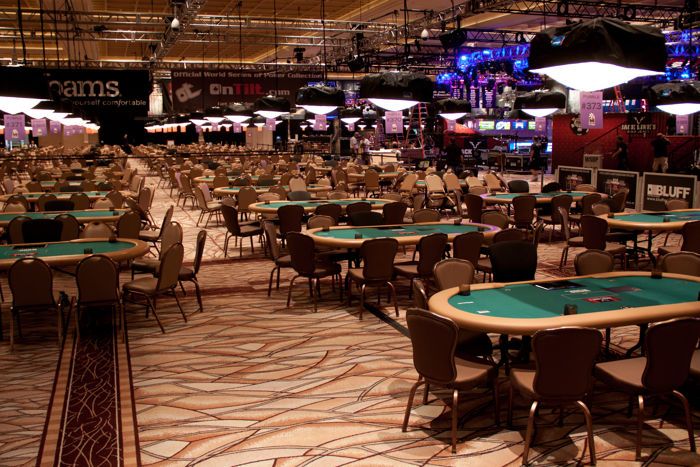
ChipTic (Re)Makes its Debut
WSOP Tournament Director Jack Effel voiced over a short promotional video for ChipTic for the 2012 WSOP.
Jack Effel: For the first time, you can follow anyone in the tournament. For the first time, you can follow everyone in the tournament. Poker's now interactive — from the table, from the rail and from your home.
ChipTic went live once more on June 22, 2012.
Eric Brewstein: We've circled the wagons the last couple of weeks, got our ducks in a row, got very confident in what we're doing and we're launched. We're not in a rush. This is hopefully gonna change how poker's moving forward. It's a marathon, not a sprint. We'll open up the floodgates for players and observers tomorrow at noon.
Charlie Ciresi: Chiptic brought along a very, very, very large staff. They were all in blue shirts, they were everywhere.
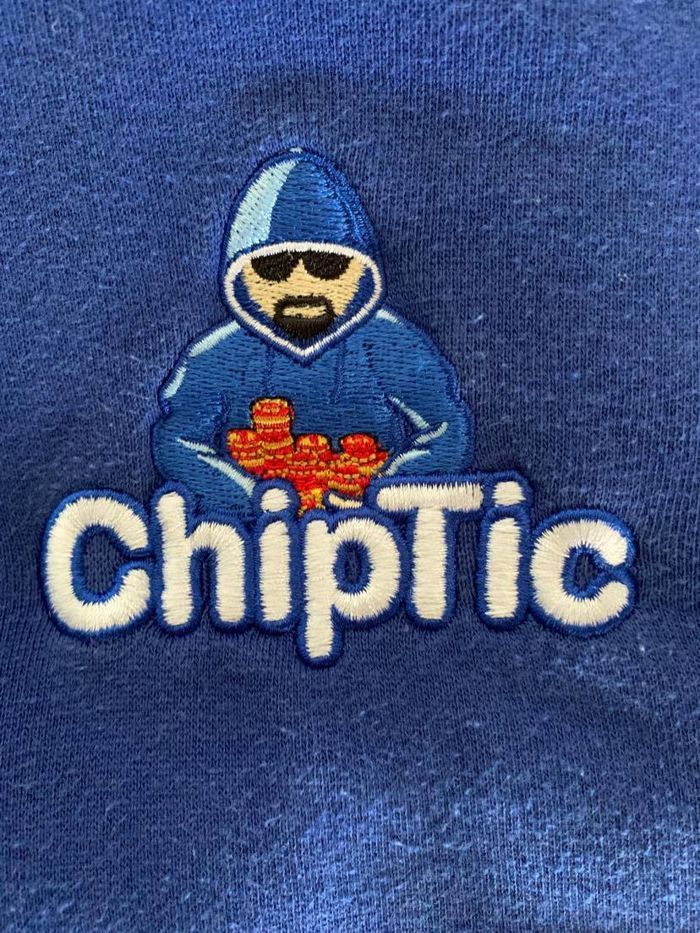
Donnie Peters: All of a sudden it just kind of launched one day. There was no press release — all of a sudden this thing is here. People running around in blue shirts rolling around carts. They had kind of hijacked all of the TV monitors to display the leaderboards. It was pretty in your face.
Mickey Doft (PokerNews reporter): What I remember was they had people out there with tablets counting chips. But when it's people doing chip counts, I'm wondering are they any good with chip counts? I've been doing this for four years and I've never seen any of these people. I had my doubts.
Al "AlCantHang" Rash (ChipTic employee): I did an interview with Dan Carpenter. He was my main contact. He brought me in as one of the guys who was wandering the floor making sure the tablets and everything were working. I was also taking care of the cards system, the table breaks and balancing. I was part of the crew walking the floors and if the dealers had a problem with the tablets or messed something up, they would yell out to us, we would run over with a backup tablet and we would log that into the table and swap it out with the non-working one and try to keep it at seamless as possible.
When it was rolling, it was really cool. I was sitting at the laptop and as soon as nine seats emptied, you hit a button and it would redraw the players from a table and send them to the empty seats. It was really slick, it was really smooth.
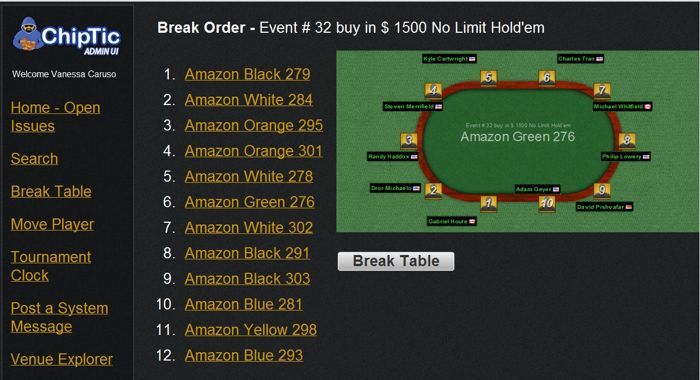
It seemed to me the weakest chain was getting all the dealers on board to add a step or two to their regular process that they've been used to their entire career: checking players in and busting tables. If we had a dealer that wasn't getting it, you could have an empty seat for a long time. That seemed to be the kink in the system. For the most part, as long as everyone was on top of everything, it was really slick.
Mickey Doft: How is a computer system going to track a gigantic no-limit hold'em field? There's so many things that happen. Sometimes it'll be 15 minutes before the dealer gets anybody's attention that there's an empty seat at their table. What if one serious situation comes up that requires a lot of attention?
"It was a Pretty Spectacular Failure"
Dan Carpenter: It worked for probably three or four events. It worked and it was awesome. Then, we tried to run a 4,000-player tournament on a Saturday.
Carpenter's memory may have been a tad off, but there was a $1K event on a Sunday that drew just shy of 3,000 runners that he likely remembered as the moment when ChipTic first faltered in high-profile fashion.
Al "AlCantHang" Rash: It exploded. I never actually heard in the back end what actually happened. But, they lost track of something in the system and from what I recall, there were tables getting broken that shouldn't be broken.
Mickey Doft: At some point, the floor staff was waiting for ChipTic to print seat assignments for a table that was breaking. It just wasn't working. Staff was like, "We have to move these players." ChipTic was like, "Hold on, we'll get it working." Floor staff was like, "No, we can't wait."
Charlie Ciresi: We're breaking 10 tables a minute in these giant-sized fields and it just couldn't keep up to speed. I just went to Jack [Effel] and said, "We have to stop this. It's just not working."
Dan Carpenter: Two minutes before break, the tablets started freezing. We had 60 open seats. We said, "Wait for break, wait for break!"
Al "AlCantHang" Rash: I worked with Charlie for a decade or more at different places. Literally that was the only reason Charlie ever yelled at me. He screamed at me and told me to get these tablets off his tables with a few chosen words in there.
"He screamed at me and told me to get these tablets off his tables."
There was compounding things and Charlie just said, "Get off my floor. We'll talk tomorrow."
It was a pretty spectacular failure.
Dan Carpenter: They pulled it and they put out seat cards. They pulled it and said it was too unreliable. Unfortunately at that point, the company had spent millions of dollars designing this thing.
Last Stand at One Drop
About a week later, ChipTic was back on the WSOP floor for the inaugural $1,000,000 Big One for One Drop. The seat tracking functionality was on ice.
Dan Carpenter: Basically, we were following the size of the pots and we were updating peoples chip counts manually so people could watch the leaderboard.
Mickey Doft: I don't remember ChipTic doing anything for One Drop the first day. Day 2, I remember them. My main memory was it got to dinner break and there were two tables left.
This was my fifth summer. The way I had stood out previously was during breaks I'd spend my time counting chips. Dinner break of the One Drop, you've gotta get the chip counts. It's the biggest event ever at this point.
Donnie Peters: They had that hiccup and now they're coming into the One Drop. This is the biggest and best. Are they gonna be able to do this?
Going into it, it was always our plan to have Mickey do chip counts. Mickey takes his job as serious as anyone I've ever seen. The kid's relentless and he's extremely good at what he does.
Mickey Doft: I remember specifically Antonio Esfandiari, he was chip leader, and his stack was an absolute disaster to count. I remember getting on my knees and getting ready to count and recount from different angles. And I remember the ChipTic people just leave. They went on their dinner break. Which I found weird, it's the perfect time to get accurate chip counts.
Donnie Peters: For him, it was kind of like a challenge. He's done it so long and he's so good at it, he's finding ways to motivate himself.
Mickey Doft: Towards the end of the dinner break, Guy Laliberte gets back and sits in his seat. He's looking at the ChipTic chip counts and I could see on his face, he knows it's not right. So I said to him, "Guy, ChipTic, they didn't stay for dinner break. But go to PokerNews.com and everything's updated there for you."
Donnie Peters: It's the best players in the world and super-rich businessmen so if they're complaining, the officials are gonna take notice.
Mickey Doft: The next day, while the final table was going on...I noticed ChipTic wasn't around. At some point I asked Seth [Palansky], "Are they still doing anything?" He said, "No, ChipTic's done."
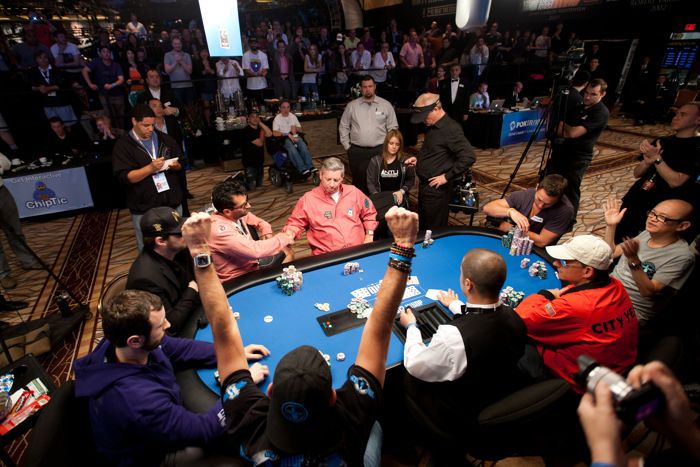
Dissecting the Demise
Al "AlCantHang" Rash: I just packed my ChipTic polo in my bag and went back to being a regular poker guy in the Rio.
I got an email. It just says, "As you know, ChipTic has ceased operations at the WSOP, and as a result your services are no longer required." That was July 10. I did get paid, though.
I really thought they had something, especially tying it into the Bravo system. As long as the system was used correctly, I thought it was spectacular.
Dan Carpenter: I took it really, really bad for awhile there. I had a pretty good reputation in Vegas after running the DeepStack Extravaganza for so many years. These were my friends that I convinced to quit their very lucrative jobs. It was the No. 1 room in Vegas at that time. I felt responsible. Luckily, everybody landed on their feet.
Donnie Peters: I think a lot of its elements were good and could be used even to this day. The way it was rolled out was probably a big detriment to their success. You can't just throw something into the WSOP. It's like hiring someone the week before and then throwing them in. You need to train things up, you need to load test everything. There's a whole ton of things that I think they just didn't think about logistically and it hurt them.
Charlie Ciresi: I pushed the product quite a bit because I believed in it, I believed it was good for the game. The concept behind it was definitely very beneficial for poker.
To be honest with you, the reason deep down inside, I will always believe this...they had used BlackBerry tablets. I think thats the reason they failed. If they came in with brand new iPads, I think you'd still see ChipTic. I truly believe that.
I think we would see it if we did implement it on a Circuit event. Not Hammonds, Cherokees, Choctaws for at least a year and slowly implement it to the bigger events. I've got 20 years of tournament experience and I 100% believe that. But the hardware, I believe, was the main issue at the time.
Doug Shrader: Problem is, once the idea was thrown out, competition was coming and it was coming fierce. So they needed to be first to market and that was the only shot at making this thrive. They had the opportunity to go for it, and if you have that you've got to do it.
If we can get the WSOP, everyone else will follow suit. It made sense. If you can get the largest poker entity in the world to say, "Yes, we're using ChipTic software technology," who is gonna follow suit? Everybody.
I think it was just the stars weren't aligned. If I had to pick one thing why it didn't quite pan out, it boils down to the software. The thing that was lacking was the software just couldn't handle the traffic they thought it could.
Al "AlCantHang" Rash: There were a lot of things that stuck around that were clearly great ideas. Clearly, the chip counts updating from the players was a great idea. PokerNews has an app, WPT has their app.
Andy Tillman: I actually think now that I've looked at systems that do similar things, it was too far ahead of its time. Partypoker uses kHold'em doing everything through mobile devices used by the floor staff. In Rozvadov, they use a system that they developed called Zeus. The system seems to work well but it has its own dedicated server and internet set up. It's a front end through back end program. Registration through payout. How we do seat cards now, there's a bluetooth printer like a little POS system. It has a lot of similarities that has a lot of the same ideas.
"We were gonna be the next big thing. And then, we just weren't."
Charlie Ciresi: I worked with a French guy I knew who designed a very similar software to ChipTic. I did a Triton event in Jeju and that's the software that I used. You're talking about 20 player fields but it worked flawlessly. ChipTic was before it's time.
Dan Carpenter: Oh, it was way ahead of its time. It was the most impressive software I have ever seen in my 24 years running poker tournaments. It was truly astounding software. We run Poker Atlas at Encore which has a lot of the features but nothing from the players' side. (Editor's note: Carpenter now runs the Encore Boston Harbor poker room.)
I really, desperately wanted to bring this product to the world. I'm telling you man, it would have changed the game similarly to the hole cam.
Doug Shrader: I think the vision was there. Because it was uncharted territory, it was hard to wrap people's heads around the fact that this could be the future.
Take Napster. Napster could be the Spotify of today. They could be Apple Music, Pandora. Those wouldn't exist if people understood what the wave of the future was: streaming music off of devices. Sometimes, the pioneers get smoked. Sometimes, the pioneers go down to be billionaires. Look at Amazon. For years, it never made a single dollar. But Jeff Bezos continued with more rounds of funding and look at it today. They're taking over the world. They had the people and investors who saw the vision. Unfortunately, we only had a finite amount of money and when the money was gone, the company was gone.
Dan Carpenter: We were planning on launching at all the WSOP stops. We were gonna go to Europe, we were gonna go everywhere. I still can't believe the company got where it did and crumbled.
Doug Shrader: You miss 100% of the shots you don't take and I believe ChipTic had that same mentality. They took their shot and they missed. We had the WSOP wrapped around our finger. We were gonna be the next big thing. And then, we just weren't.
Lead photo courtesy of Dan Carpenter.

